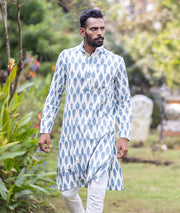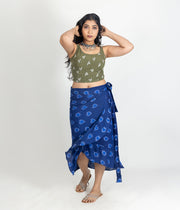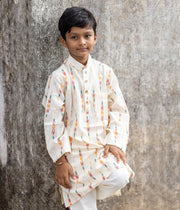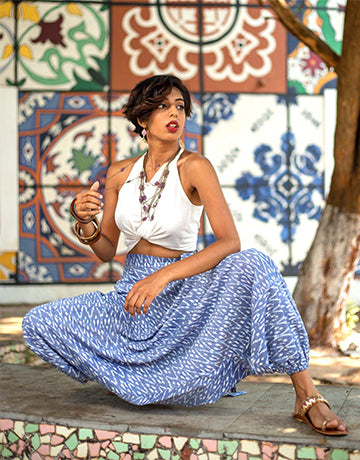Ikat fabric is renowned for its unique aesthetics, characterized by distinct patterns and vibrant colors that make each piece stand out.
The intricate designs and rich hues are not just visually appealing but are also steeped in cultural significance and artisanal craftsmanship.
The Beauty of Ikat Patterns
At the heart of Ikat’s allure are its patterns, which often feature geometric shapes, abstract designs, and motifs inspired by nature. These patterns are meticulously planned and executed through a technique known as resist dyeing, where sections of the yarn are tightly bound before dyeing to create intricate designs. This process results in the characteristic blurred or feathered edges of the patterns, giving Ikat its signature look.
The motifs found in Ikat can vary widely depending on the region of origin. For instance:
- Pochampally Ikat from Telangana is known for its sharp diamond patterns, symbolizing protection and strength.
- Patan Patola Ikat from Gujarat is famous for its double Ikat technique, where both warp and weft threads are resist-dyed to create symmetrical, mirror-image patterns, often depicting flowers, animals, and traditional symbols.
- Orissa Ikat, or Bandha, often features elaborate floral and geometric designs that are symbolic of spiritual beliefs and local culture.
Vibrant Colors in Ikat
Color plays an essential role in Ikat, with artisans traditionally using natural dyes to achieve the rich, vibrant hues that the fabric is known for. Indigo, derived from the indigo plant, is a staple color in many Ikat traditions, providing deep blues that are both striking and soothing. Reds are often obtained from madder root, while yellows and greens may come from turmeric or other natural sources.
The dyeing process in Ikat is complex and requires great skill. Artisans carefully plan the application of multiple colors, with each dye bath adding a new layer of complexity to the pattern. The use of natural dyes not only contributes to the vibrant colors but also ensures that each piece of fabric has a unique tone, depending on the exact conditions of the dyeing process.
The Art of Imperfection
One of the most captivating aspects of Ikat is its embrace of imperfection. The slight variations in pattern alignment and color distribution, often seen as a result of the hand-dyeing and hand-weaving processes, add a layer of authenticity and charm to the fabric. These imperfections are a testament to the artisanal process and are celebrated as part of the fabric's unique identity.
Cultural Significance
The patterns and colors in Ikat are not just decorative; they often carry cultural meanings and stories. In many regions, specific patterns are passed down through generations, each symbolizing aspects of life, spirituality, or social status. For example, certain motifs might be reserved for special occasions, such as weddings or religious ceremonies, while others might signify regional identity or craftsmanship.
Ikat’s Global Influence
While Ikat has deep roots in Indian tradition, its aesthetic appeal has crossed borders, influencing fashion and textile design globally. Contemporary designers often incorporate Ikat into modern fashion, blending traditional patterns with modern silhouettes, thus keeping the art form alive and relevant in the global market.
Conclusion
Ikat fabric is a beautiful amalgamation of art, culture, and craftsmanship. Its distinct patterns and vibrant colors are not just visually striking but also deeply meaningful, each piece telling a story of tradition, skill, and creativity. Whether used in clothing, accessories, or home decor, Ikat brings a touch of heritage and artistry to everyday life, making it a timeless and cherished textile.




















